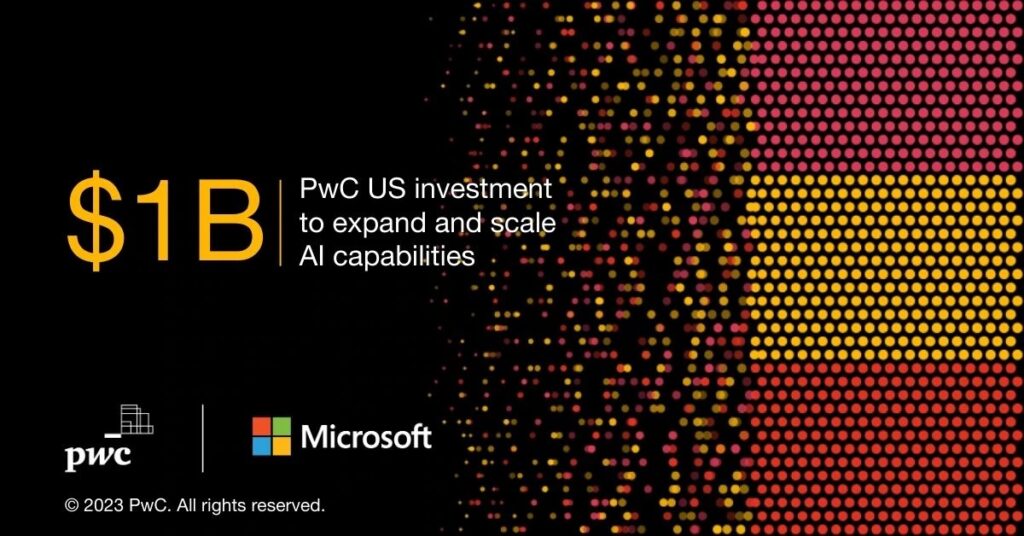
4-30 #Happy5-1 : Qualcomm is allegedly considering a dual-sourcing strategy for future high-end chipsets; Bosch is expanding its semiconductor business with silicon carbide chips; General Motors and Samsung SDI to build a new battery cell manufacturing plant in the US; etc.

German security company Nitrokey has recently released a report claiming that it has discovered an unrecorded feature in Qualcomm Snapdragon chips that collects and transmits user information directly to Qualcomm servers. Nitrokey installed a Google-free version of Android on a Sony Xperia XA2 phone equipped with a Qualcomm Snapdragon 630 chip and found that the data was being transmitted to the izatcloud.net server, which belongs to Qualcomm. Qualcomm chips collect and transmit user information, including the unique smartphone identifier, chip name, chip serial number, XTRA software version, mobile country code and mobile network code, type, and version of the carrier or operating system, device manufacturer and model, program list on the device, IP address, and other data. The data is transmitted via the insecure HTTP protocol without any additional encryption, making it accessible to virtually anyone who can read the unique identifier data sent to Izat Cloud. (Gizmo China, Nitrokey, Sina, iFeng)

Qualcomm is allegedly considering a dual-sourcing strategy for future high-end chipsets. This plan would start with the Snapdragon 8 Gen 4 for 2025 with TSMC building the regular version of the SoC using its enhanced N3E 3nm process node. The Snapdragon 8 Gen 4 for Galaxy series smartphones, would be made by Samsung Foundry using its 3nm process node. Qualcomm’s current high-end chipset, the Snapdragon 8 Gen 2, is manufactured by TSMC using its 4nm process node. In the past. Qualcomm has had its flagship application processor built in some years by TSMC and by Samsung Foundry in other years. For example, the Snapdragon 855 and 865 were built by TSMC using its 7nm and enhanced 7nm nodes respectively. The Snapdragon 888 SoC and the Snapdragon 8 Gen 1 were produced by Samsung Foundry. (Phone Arena, WCCFtech, Twitter)
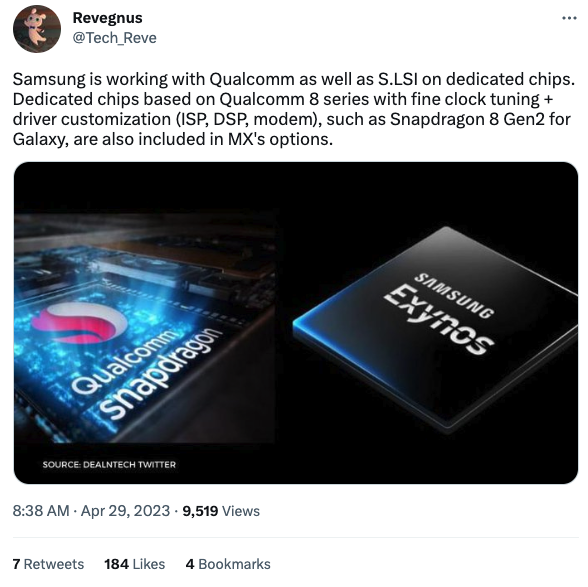
Global semiconductor revenue is projected to decline 11.2% in 2023, according to Gartner. In 2022, the market totaled USD599.6B, which was marginal growth of 0.2% from 2021. The short-term outlook for the semiconductor market has deteriorated further. Global semiconductor revenue is forecast to total USD532B in 2023. The memory industry is dealing with overcapacity and excess inventory, which will continue to put significant pressure on average selling prices (ASPs) in 2023. The memory market is projected to total USD92.3B, a decline of 35.5% in 2023. However, it is on pace to rebound in 2024 with a 70% increase. (Neowin, Gartner)

Bosch is expanding its semiconductor business with silicon carbide chips. The technology company plans to acquire assets of the U.S. chipmaker TSI Semiconductors, based in Roseville, California. Currently, it mainly develops and produces large volumes of chips on 200mm silicon wafers for applications in the mobility, telecommunications, energy, and life sciences industries. Over the next years, Bosch intends to invest more than USD1.5B in the Roseville site and convert the TSI Semiconductors manufacturing facilities to state-of-the-art processes. Starting in 2026, the first chips will be produced on 200mm wafers based on the innovative material silicon carbide (SiC).(TechCrunch, The Register, Bosch)
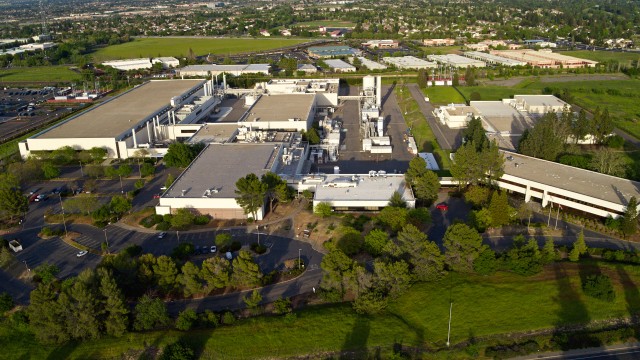
Samsung’s chip division posted a loss of KRW4.58T (USD3.4B) during 1Q23, the division’s first loss in 14 years. Samsung but said it expects the global tech industry to begin emerging from its downturn later in 2023. Samsung has said that it posted KRW63.75T in revenue and KRW640B in operating income, a drop of 18.75% and 95.47%, respectively, from the prior year. Samsung said global economic uncertainties and the sluggish market situation has caused consumer demand to slow down. The company’s chip division recorded KRW13.73T in revenue and KRW4.58T in operating income. (The Elec, The Verge, Bloomberg, CNBC, Yahoo)
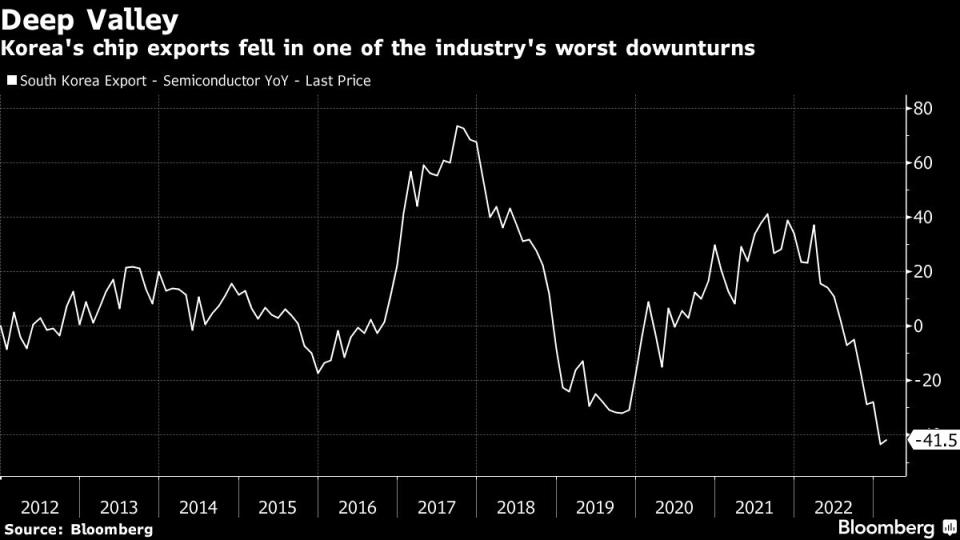

The foldable smartphone market remained stable in 1Q23, according to IDC. With shipments reaching 1.02M units, a YoY increase of 52.8%. Among them, the share of vertically folded products continued to rise to 44.3%. With the addition of more manufacturers and the release of more products, it is expected that the Chinese foldable phone market will continue to grow rapidly in 2023. OPPO became the first in the folding screen market share for the first time, reaching 35.0%. Among them, Find N2 Flip occupies nearly 22% of the market share, becoming the hottest model of the season. (GizChina, IDC)
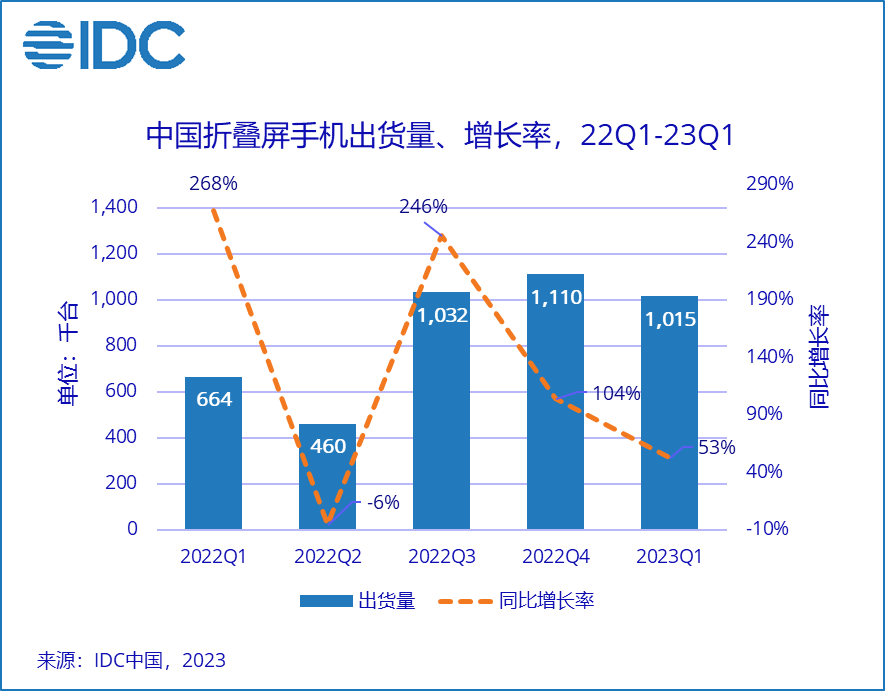
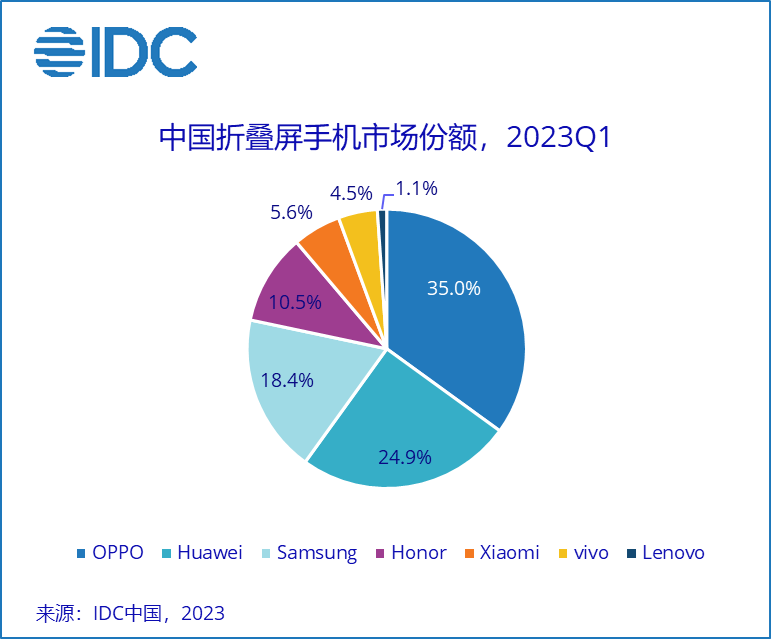
Future Interfaces Group at Carnegie Mellon University has developed a technology that could enable smartphones to physically deform a display for various elements, such as notifications. The primary achievement they are claiming is the successful integration of the hydraulic haptic system into a slim panel concealed behind an OLED display, like the ones utilized in modern smartphones. The group says their electro-osmotic pumps can be as small as 2mm in diameter, with each pump being individually controllable and supporting fast update rates. (Apple Insider, TechCrunch, Google)
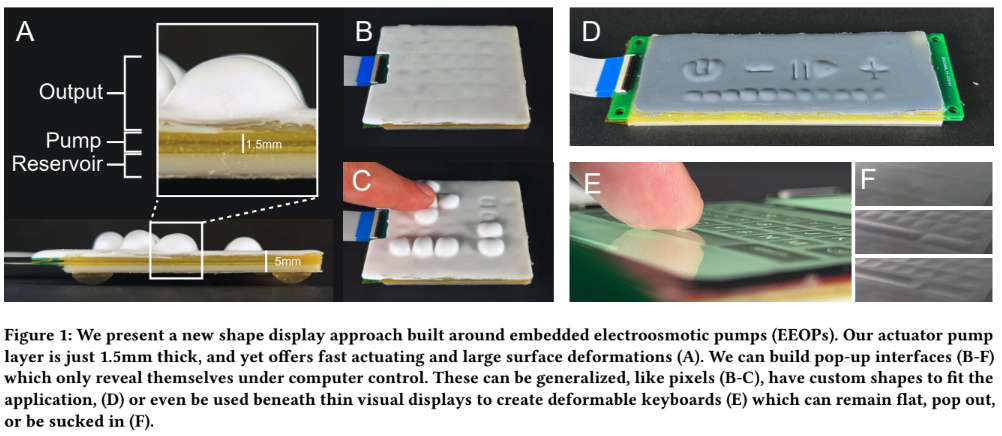

Samsung has rolled out a software update to the Galaxy Watch 5 and the Galaxy Watch 5 Pro which enabled these smartwatches to track the menstrual cycle of a user using skin temperature sensors built into these wearables. Now, it looks like the company wants to leverage these temperature sensors even further to offer more such health-tracking features. Samsung has revealed that it will offer new skin temperature-based health tracking functions on Galaxy Watch 5 series with future software updates. The Galaxy Watch 5 and the Galaxy Watch 5 Pro feature an infrared-based temperature sensor. However, these sensors were not utilized by the two smartwatches in any manner until recently when the company announced skin temperature-based menstrual tracking.(GSM Arena, Samsung, SamMobile)
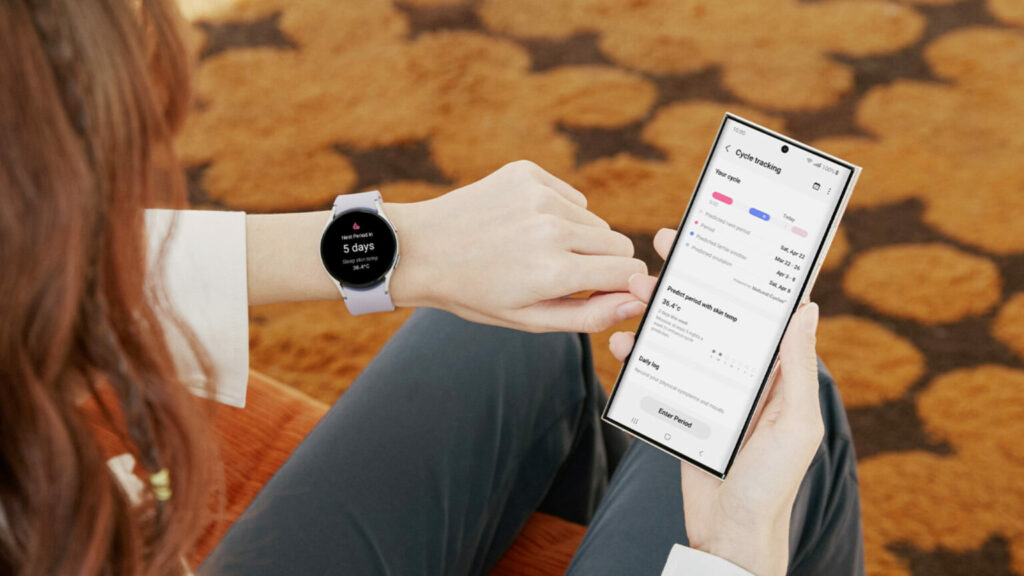

South Korea President Yoon Suk Yeol has asked Tesla CEO Elon Musk to invest in a factory in Korea. Yoon has noted that Korea has top-notch manufacturing robots and an advanced labor force, “making it an ideal country for Tesla to run a gigafactory with the highest efficiency”. The president has expressed his intention to actively support Tesla and offer incentives regarding location, workforce and taxes if the EV maker decides to invest in Korea. (CN Beta, Bloomberg, Korea JoongAng Daily, Electrek)
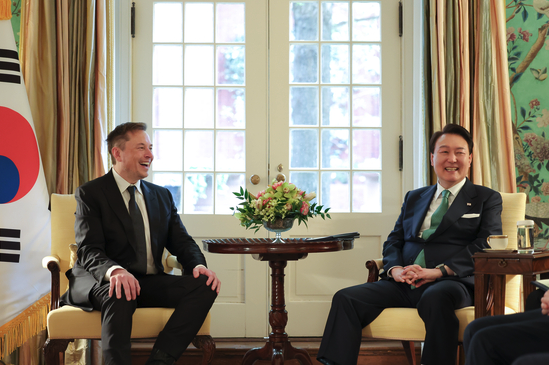
General Motors (GM) and Samsung SDI have announced they plan to invest more than USD3B to build a new battery cell manufacturing plant in the United States that is targeted to begin operations in 2026. The plant will have more than 30GWh of capacity and will bring GM’s total U.S. battery cell capacity to about 160GWh when it is at full production. The companies plan to jointly operate the facility, and it is projected to have production lines to build nickel-rich prismatic and cylindrical cells. The Ultium Platform was strategically designed to accept multiple cell form factors and chemistries. For example, in China, the Cadillac LYRIQ is powered by prismatic cells applied to the same battery packs used in the U.S.(General Motors, The Register, Fox Business, Evertiq, Reuters)
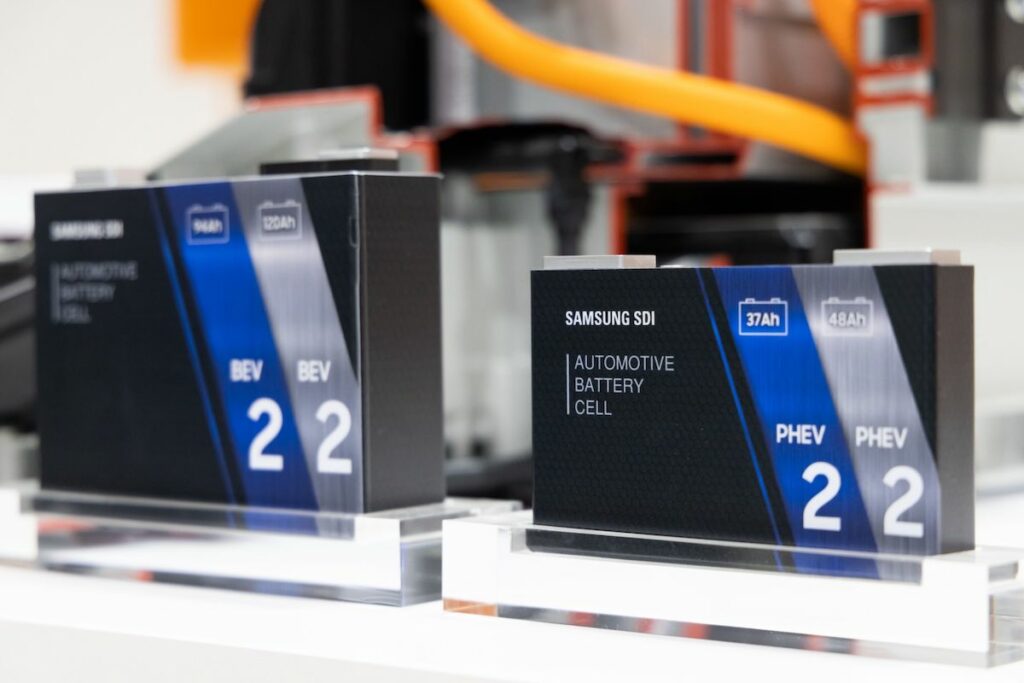
LG Energy Solution (LGES) and Toyota are expected to finalize their collaboration on supplying electric car batteries in the US. LGES already has a battery joint venture with another Japanese automobile giant Honda. If LGES takes a similar route with Toyota, their pair will likely spend around KRW3T to build a battery plant with an annual capacity of 20GWh. Winning Toyota, which competes with Volkswagen for the top spot in the automobile market, will be a huge win. Toyota already has a battery joint venture with Panasonic though this seems to be aimed at servicing its domestic market. (The Elec, Notebook Check)
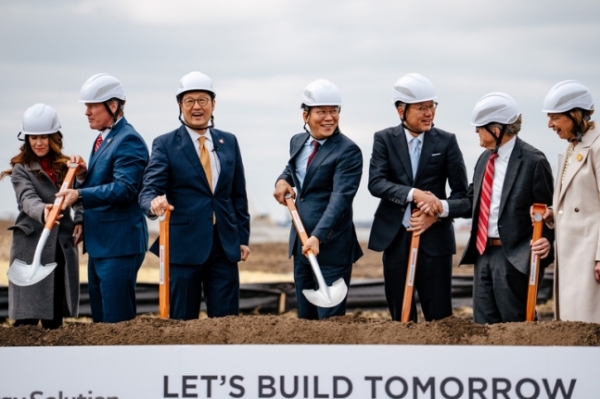
Lotte Energy Materials is also planning to develop and manufacture copper foils for 4680 batteries. The company said it was testing the foil, called I2SH. The battery type is used widely by Tesla for its electric vehicles. Solus Advanced Materials and SK Nexilis are also manufacturing the foils, which will be heading for batteries used by the US car maker. Copper foil is used in the anode and is more expensive than aluminum foil for the cathode, making it also more profitable.(The Elec)
LG Energy Solution (LGES) will invest KRW600B (USD450M) to build a new production line in Ochang, North Chungcheong, the latest in a series of efforts to ramp up production capacity for electric vehicle batteries. The new line, due to go online by Dec 2024, will be manufacturing pouch-type battery cells with diameters and lengths measuring over 500mm. This is part of the EV battery maker’s KRW4T investment plan aimed at developing the Ochang manufacturing complex into a hub for key battery development, production and research by 2026, which was announced in 2022.(Korea JoongAng Daily, The Elec, Korea Times)
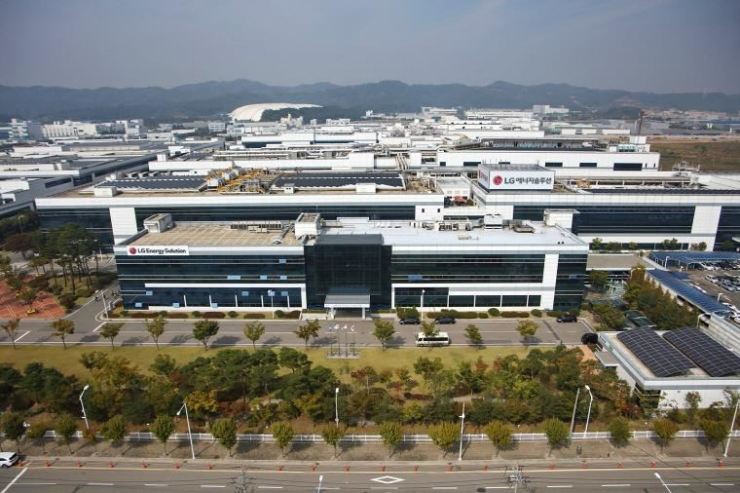
Samsung SDI is looking to add 3D CT scanning to its battery production. It will be based on 3D computed tomography (CT) inspection equipment. The company has introduced 3D CT technology, which has been limited to research and development (R&D) or sampling, to the production site. The inspection will be done in-line and the company has already adopted the system at its factory in Goed, Hungary. The equipment was supplied by SFA, and apart from Samsung, LG Energy Solution has already adopted the method in its battery production.(The Elec, SamNews)
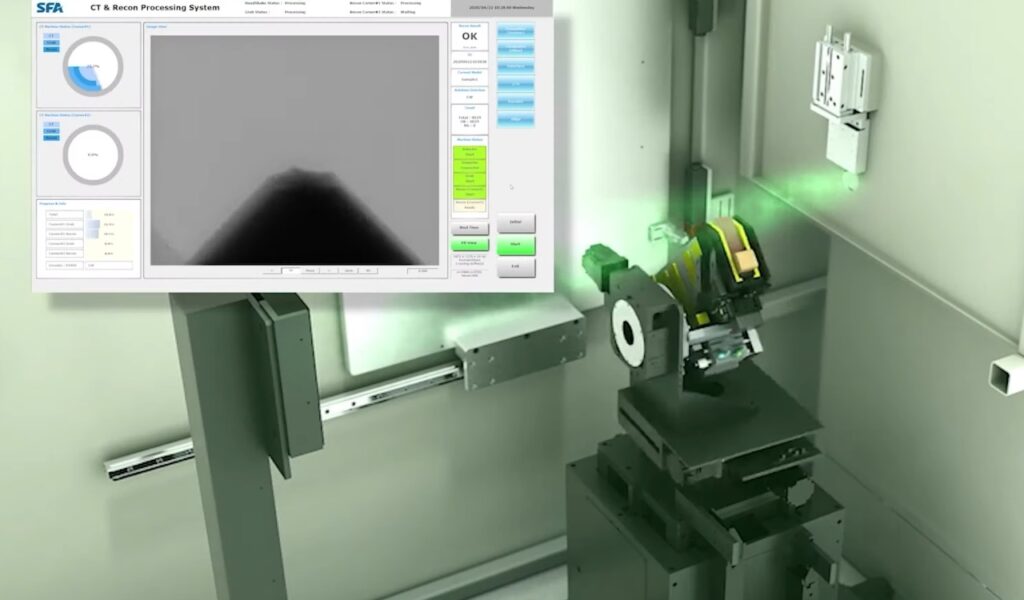

With all Apple’s 4 iPhone 15 models expected to feature a USB-C port instead of Lightning, several Apple accessories will switch to USB-C as well. EarPods with a USB-C connector are reportedly already in mass production. The new EarPods would connect directly to the USB-C port on iPhone 15 models, without an adapter. (MacRumors, Apple Insider, Twitter)
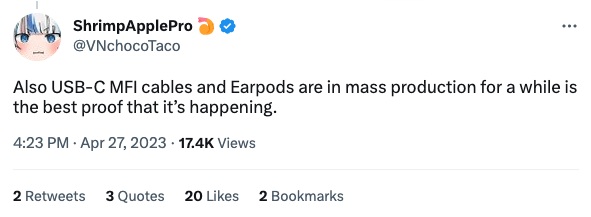
Honor CEO Zhao Ming has said it has ambitious plans to take on Apple’s iOS. He also said that Honor’s R&D expenses in 2022 account for 10% of the company’s total revenue, which is the main reason for being so optimistic about the future of MagicOS. He has pointed out that Apple’s smartphones have inferior hardware, outdated design, bad reception and poor battery life compared to many Android smartphones, including the Magci5 series. Yet people flock to Apple mostly because of iOS and the ecosystem that it provides.(GSM Arena, My Drivers)
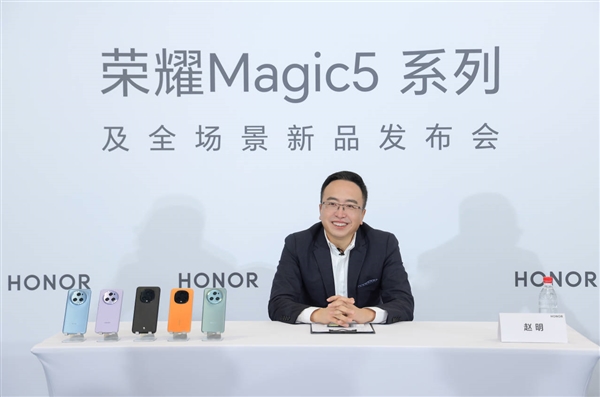
China’s smartphone market is one of the largest and most competitive in the world. In the first quarter of 2023, the market shipped about 65.44M units, according to IDC. This represents a YoY decrease of 11.8%. The beginning of 2023 has been sluggish for the Chinese mobile phone market. With quarterly shipments declining by more than 10% year-on-year since 2022. The COVID-19 pandemic has had a major impact on the market. With demand not rebounding significantly after the lifting of epidemic control. Consumers are still affected by factors such as the economic downturn and consumer confidence. As a result, the replacement cycle for mobile phones has continued to lengthen, with more and more consumers using their phones for 3-4 years rather than replacing them frequently. Manufacturers have also played a role in extending the replacement cycle by advertising that their products will not freeze for 48 months, and by promoting large memory and storage combinations that can further extend the replacement cycle. OPPO returned to the number one position in the domestic mobile phone market with a market share of 19.6% in 1Q23. (GizChina, IDC)
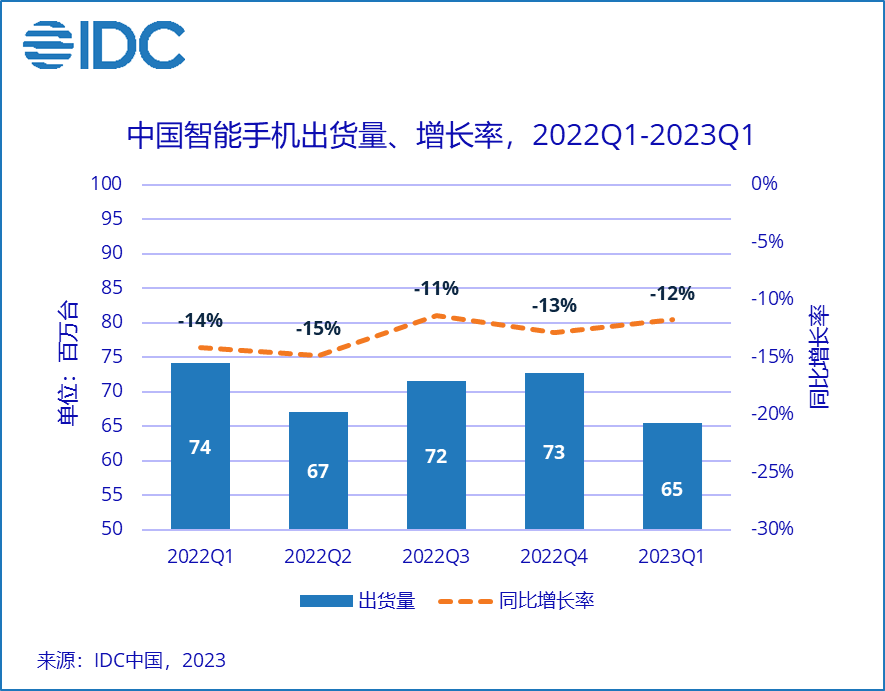
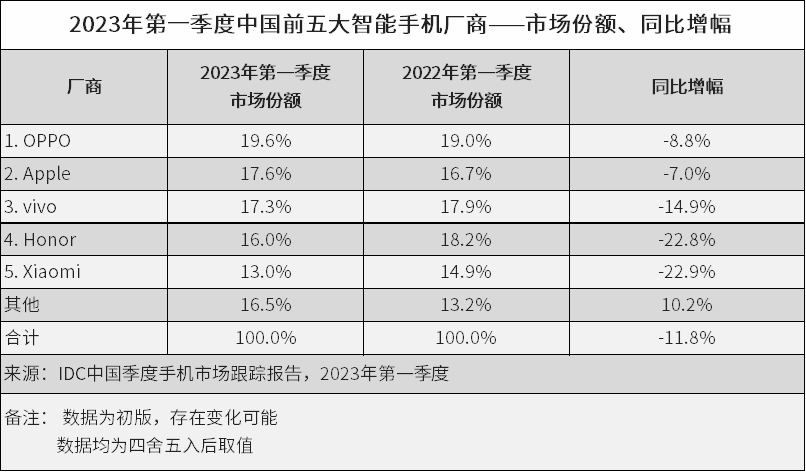
According to Canalys, the global smartphone shipments fell by 13% to 269.8M units in 1Q23. The demand decline has started to flatten, although the contrast between 1Q22 and 1Q23 is still stark. Samsung reclaimed its pole position and shipped 60.3M units, driven by a refreshed product portfolio. Apple came in second with 58.0M shipments. It was the only top 5 vendor to grow YoY, which gave it a strong 21% market share. Xiaomi defended its number 3 position with 30.5M shipments while OPPO and vivo completed the top 5, shipping 26.6M and 20.9M units, respectively, securing 10% and 8% market share. (CN Beta, GSM Arena, Canalys)
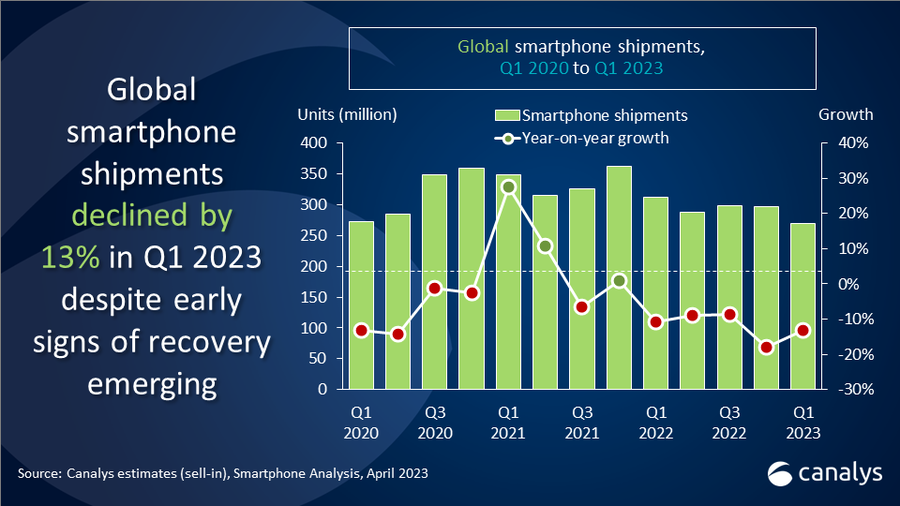
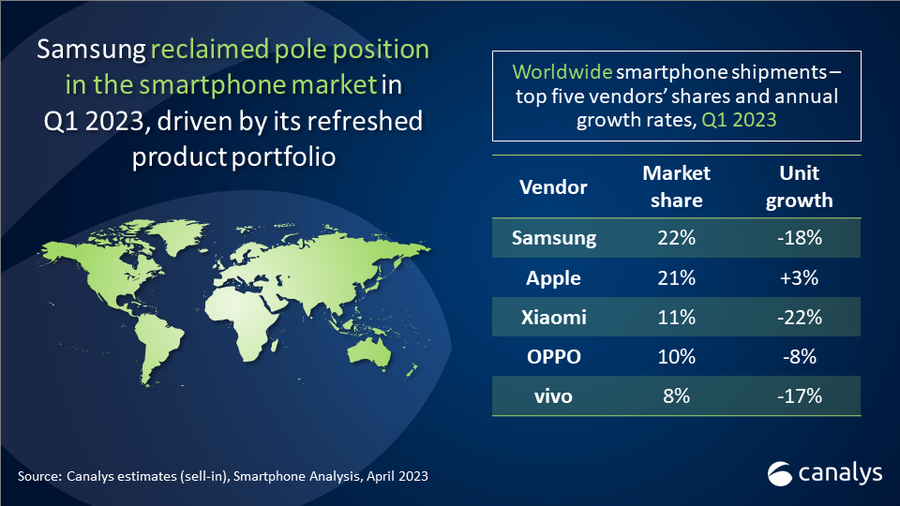
Apple has revealed the number of active monthly users for various versions of its App Store in Europe in order to comply with the EU’s Digital Services Act (DSA). The disclosure published on Apple legal resources site reveals that the iOS App Store has 101M users in Europe, with the iPadOS App Store trailing behind with 23M users. The macOS App Store has 6M users and the tvOS App Store has 1M. Apple has also provided estimated figures for the watchOS App Store, Apple Books, and Podcasts paid subscriptions, which have fewer than 1M monthly users in Europe. (The Verge, Apple)
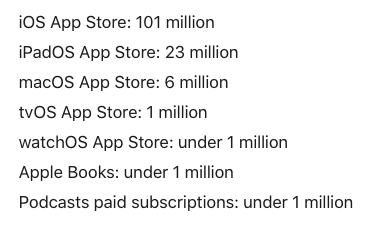
Worldwide smartphone shipments declined 14.6% YoY to 268.6M units in 1Q23, according to IDC. This marks the 7th consecutive quarter of decline as the market continues to struggle with lukewarm demand, inflation, and macro uncertainties. While the decline is more than the 12.7% IDC previously forecasted, the results are not surprising. Inventory has remained elevated across regions, however it is in significantly better shape compared to 6 months ago thanks to reduced shipments and heavy promotional activities. (IDC, Neowin)
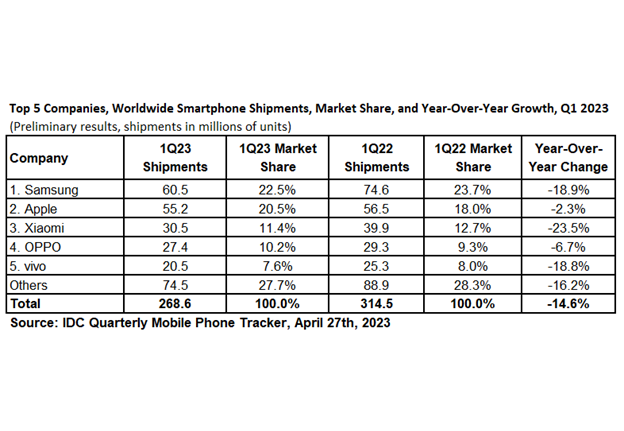
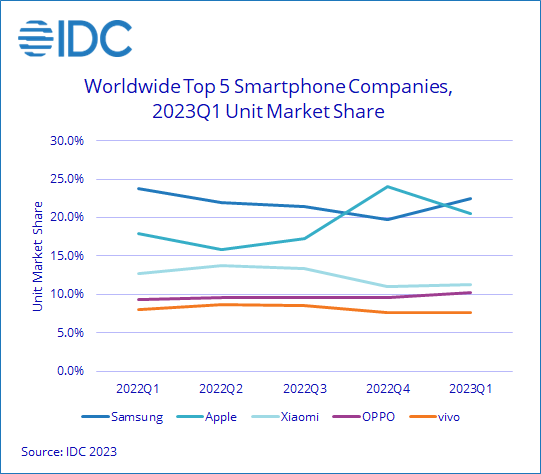

Samsung Electronics has introduced a new free-to-play “Gaming Zone” with Samsung screens in collaboration with Microsoft Xbox at Microsoft Experience Centers in London and New York. In June of 2022, Microsoft’s Xbox joined Samsung Gaming Hub, the world’s first smart TV platform to include the Xbox App on Smart TVs. With this partnership, Samsung Gaming Hub users are now able to stream over 100 high-quality games through the Xbox App by subscribing to Xbox Game Pass Ultimate.(Sammy Hub, Samsung, Neowin)
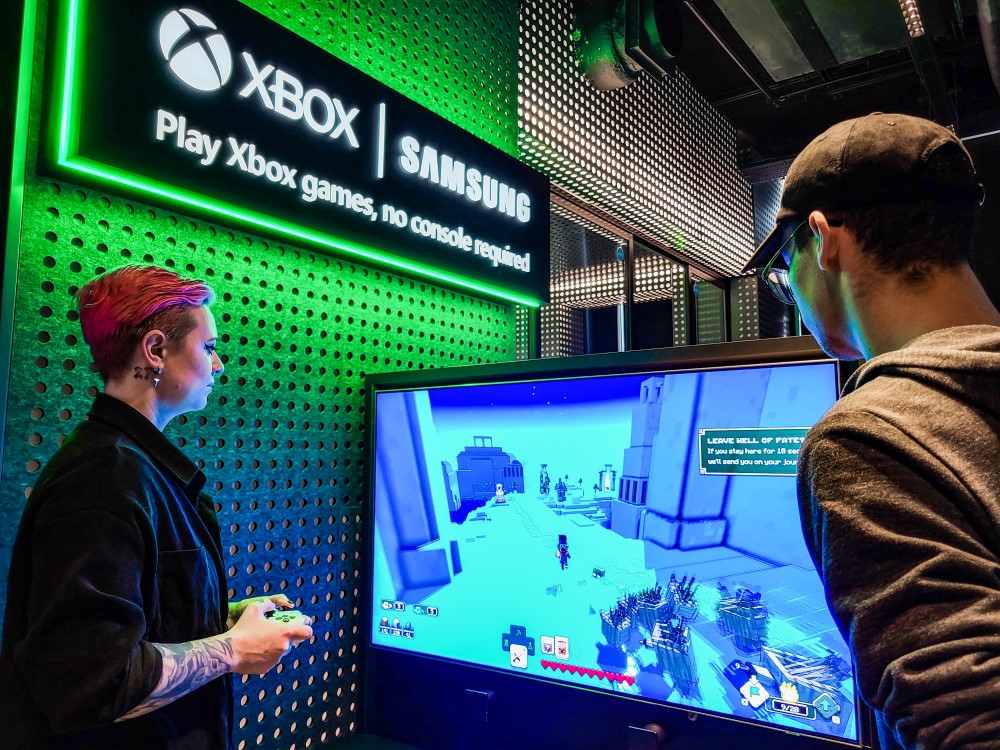

Pony.ai has announced that it has obtained the first-ever self-driving passenger taxi permit in Guangzhou, China. This will allow the company to run a self-driving ride hailing service that supports remote assistance and omits a safety driver inside the vehicle. The new service will allow commuters in Guangzhou to enjoy fully unmanned autonomous driving service when they place a request through the PonyPilot+ app. The new permit is coming after Pony.ai obtained the first remote test permit in the city in Jun 2021. It obtained another permit after the opening of the Guangzhou long-distance passenger transport policy. The new permit will see Pony.ai fully autonomous Robotaxis traversing an area of 803 square kilometers in the Nansha District of the city.(Gizmo China, Sina, IT Home)
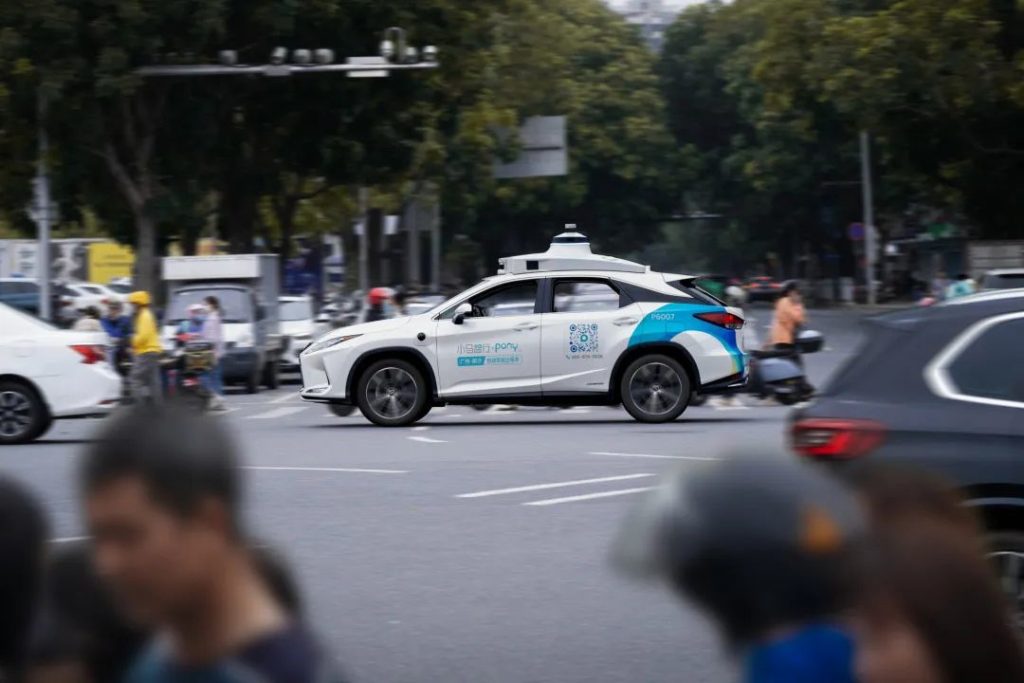
Skoda has announced plans for a veritable EV onslaught with no fewer than 6 models coming by 2026 to cover various segments of the market. The Volkswagen Group brand will invest EUR5.6B (USD6.1B) by 2027 in these 6 vehicles that are set to feature the brand’s new “Modern Solid” design language. Skoda wants sales of EVs to account for 70% of total annual deliveries by the end of the decade. Meanwhile, the extended electric portfolio is being previewed through “car sculptures” giving us a vague idea of the new styling direction across several segments.(CN Beta, WhichCar, Motor1, Motor1)
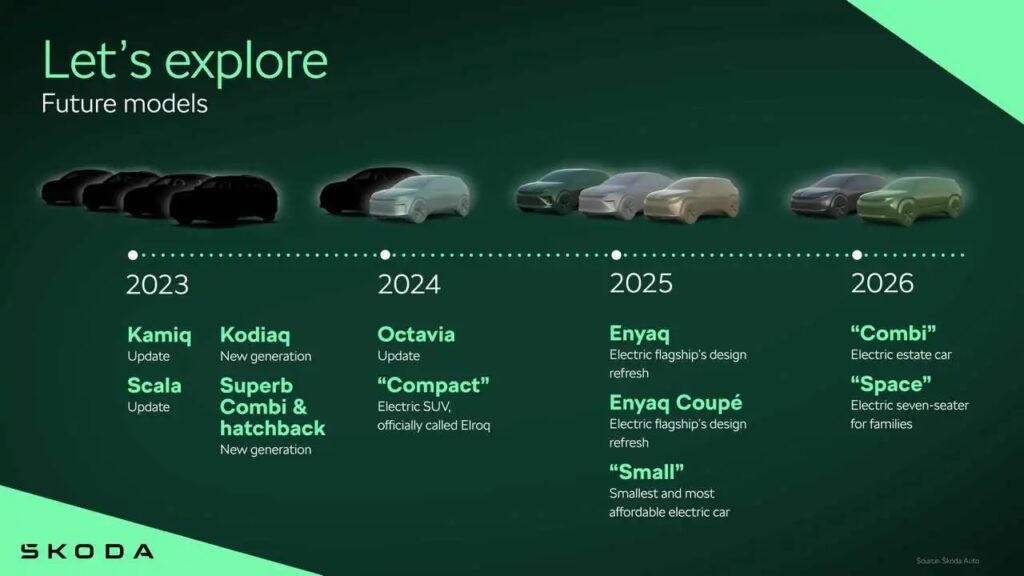
According to IEA, electric car markets are seeing exponential growth as sales exceeded 10M in 2022. A total of 14% of all new cars sold were electric in 2022, up from around 9% in 2021 and less than 5% in 2020. Three markets dominated global sales. China was the frontrunner once again, accounting for around 60% of global electric car sales. More than half of the electric cars on roads worldwide are now in China and the country has already exceeded its 2025 target for new energy vehicle sales. In Europe, the second largest market, electric car sales increased by over 15% in 2022, meaning that more than one in every five cars sold was electric. Electric car sales in the United States – the third largest market – increased 55% in 2022, reaching a sales share of 8%. Over 2.3M electric cars were sold in 1Q23, about 25% more than in the same period last year. (IEA, report, CN Beta)
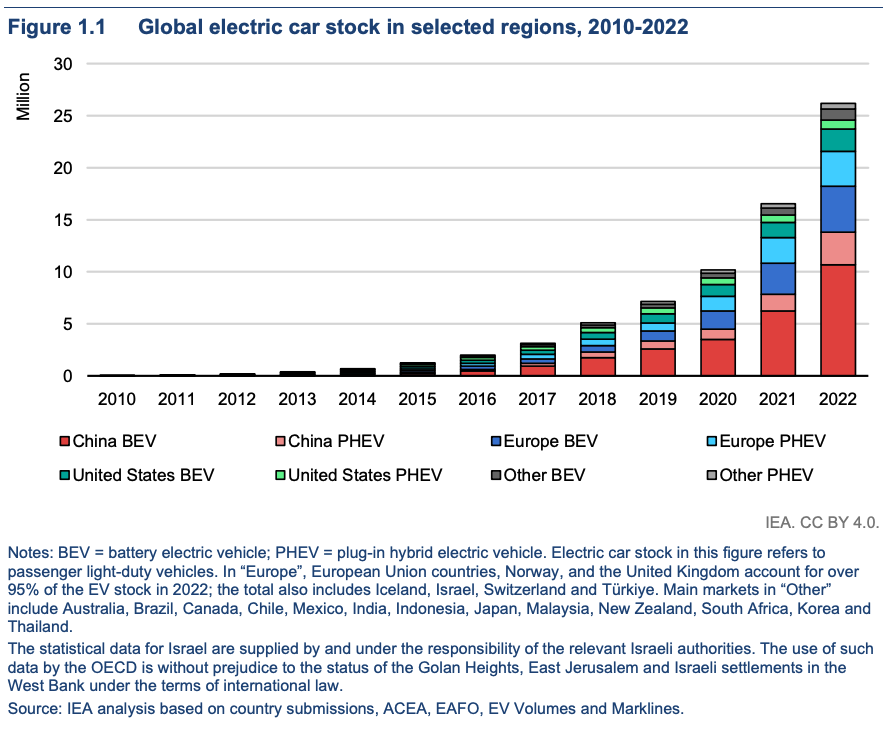
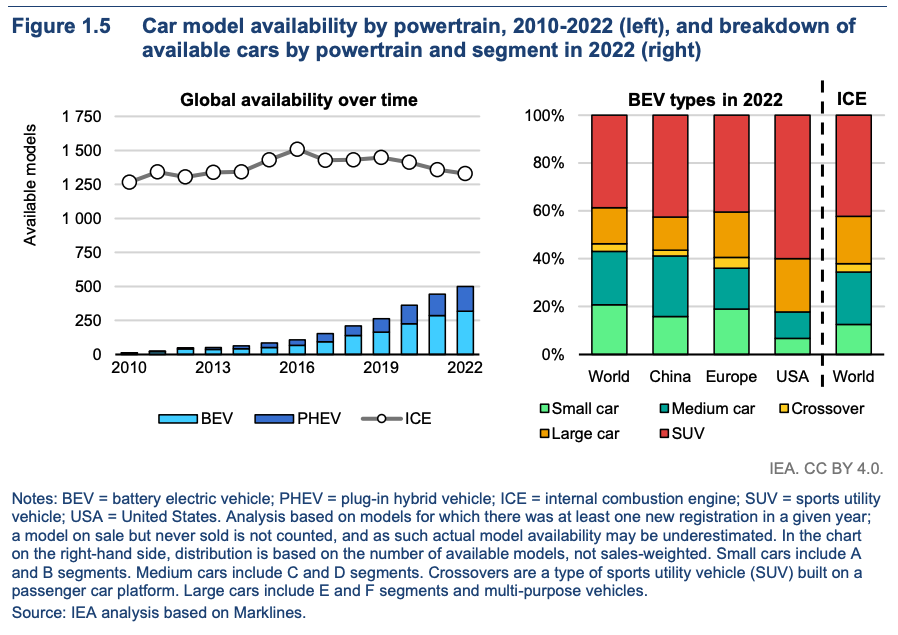
Morris Garages (MG) India has formally launched its latest electric car, the Comet EV, in India at INR 7.98 lakh. The Coment is MG’s second electric vehicle in India after the ZS EV. The Comet is a rebranced version of Wuling Air EV. Wuling is MG’s sister brand. The MG Coment EV is a compact car with a boxy design. The car has a two-door layout, with a seating capacity of up to 4 passengers. It is about 2974 mm in length, 1505 mm in width, 1640 mm in height and have a 2010 mm long wheelbase. It has turning circle radius of just 4.2 meter. The car 17.3 KWH li-ion battery which claims to offer 230 km range.(TechCrunch, Money Control, India Times)
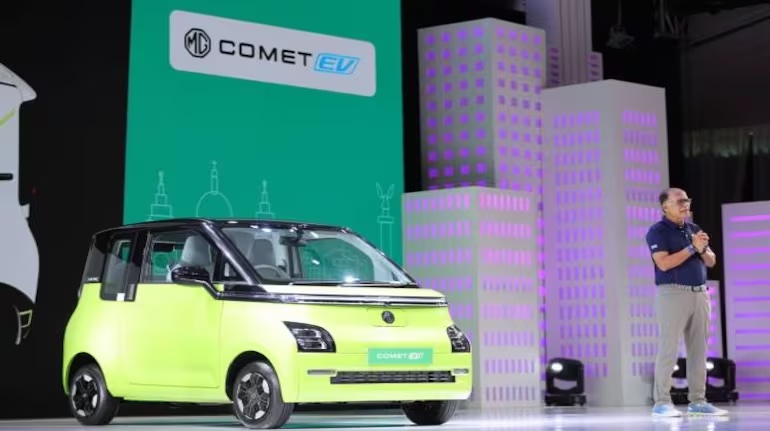
Honda has announced plans to sell a new EV model in North America starting in 2025. While the 2024 Prologue uses General Motors (GM)’s Ultium battery platform, Honda has just announced that a second electric model using Honda’s proprietary platform will follow in 2025 for North America. It is described as a “mid-to large-size” EV and will use Honda’s new electric platform, called e:Architecture. In Japan, Honda is expected to release a series of small-size EVs, including an electric N-One, which is a mini box-like Kei car that can be commonly seen on the streets in the country, in 2024. It will also launch a small-size SUV for the Japanese market in 2026.(Engadget, Auto Week, Car and Driver)
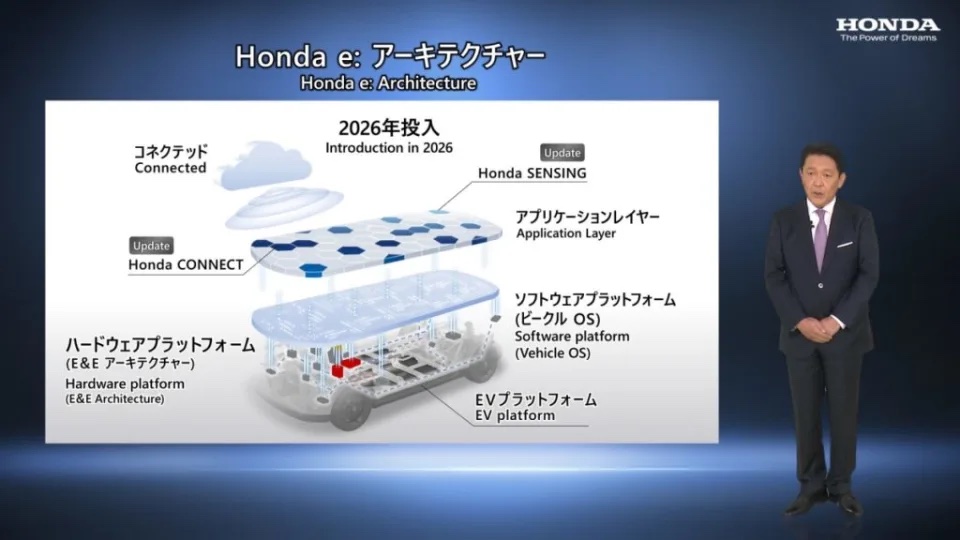

Moderna, a biotechnology company pioneering messenger RNA (mRNA) therapeutics and vaccines, and IBM have announced an agreement under which Moderna will explore next generation technologies including quantum computing and artificial intelligence to advance and accelerate mRNA research and science. Moderna will participate in the IBM Quantum Accelerator program and the IBM Quantum Network. Under the agreement, IBM will provide access to quantum computing systems, as well as expertise to assist Moderna in exploring cutting-edge life sciences use-cases powered by quantum technologies. Moderna and IBM will apply MoLFormer, an AI foundation model that can help scientists predict a molecule’s properties, and could help them understand the characteristics of potential mRNA medicines.(VentureBeat, CNBC, IBM, Pharmaceutical Technology, IT Home)
PricewaterhouseCoopers (PwC) has unveiled grand plans to invest USD1B in expanding and scaling its artificial intelligence (AI) portfolio over the next 3 years. The significant investment aims to assist clients in completely reimagining their business workflows through generative AI. In a bid to revolutionize the tech space, the firm has announced a major partnership with Microsoft. The partnership aims to develop scalable AI solutions, harnessing OpenAI’s cutting-edge GPT-4 / ChatGPT technology alongside Microsoft’s Azure OpenAI Service. PwC believes this unique partnership will usher in a new era of innovation, propelling the company to greater heights by unleashing generative AI’s full potential.(VentureBeat, PwC)
